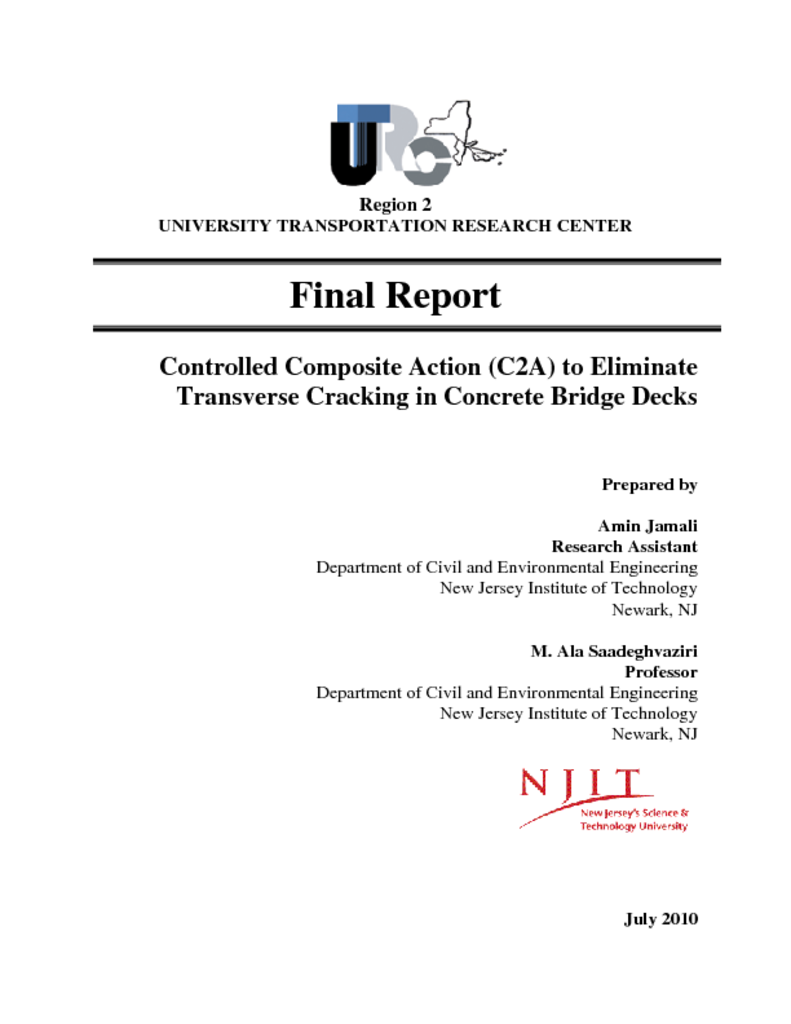Tens of thousands of bridges in the US develop transverse deck cracking due to concrete shrinkage. Transverse cracks are observed on various types of superstructures and in most geographical locations. They increase the maintenance cost, reduce bridge life through accelerated corrosion, cause water leakage, and impact aes thetics. Most researchers have tried to tackle this problem to date by focusing on changes in design and construction techniques, many of which have been implemented, but the problem still remains.
This study focused instead on the possibility of controlling the composite action through the development of a mechanism to prevent the action (restraint) dur ing early stages (i.e. as concrete shrinks), while activating necessary action later on when service load was greater. To achieve this objective, the connectors were wrapped in a carefully selected hyperelastic material, which, under low level of stresses, would not p rovide any resistance.
The research utilized finite element methods and experiments, but the results showed that the C2A idea in its preliminary form may not guarantee elimination of t ransverse deck cracking if significant shrinkage happens in the concrete. This is because when the hyperelastic layer permits a free deck shrinkage (which is usually significant), a gap develops between the shear connector and the deck. This was anticipated during original development of the concept, but i t was estimated that service load straining will close this gap, which did not actually occur.
The researchers propose another look by relying on a revised approach which proposes to use a delaying mechanism that will postpone the composite action to a time after the major portion of the free shrinkage has happened.
To accomplish this, it is proposed that threaded bolts instead of welded studs be installed on the top flange of the girder and remain loosely fastened until a significant part of the concr e te shrinkage takes place. Preliminary results indicate that number of shear studs can be significantly reduced to facilitate adoption of this modification. However, a further feasibility study to investigate the practical and economical aspects of such a remedy is recommended.




